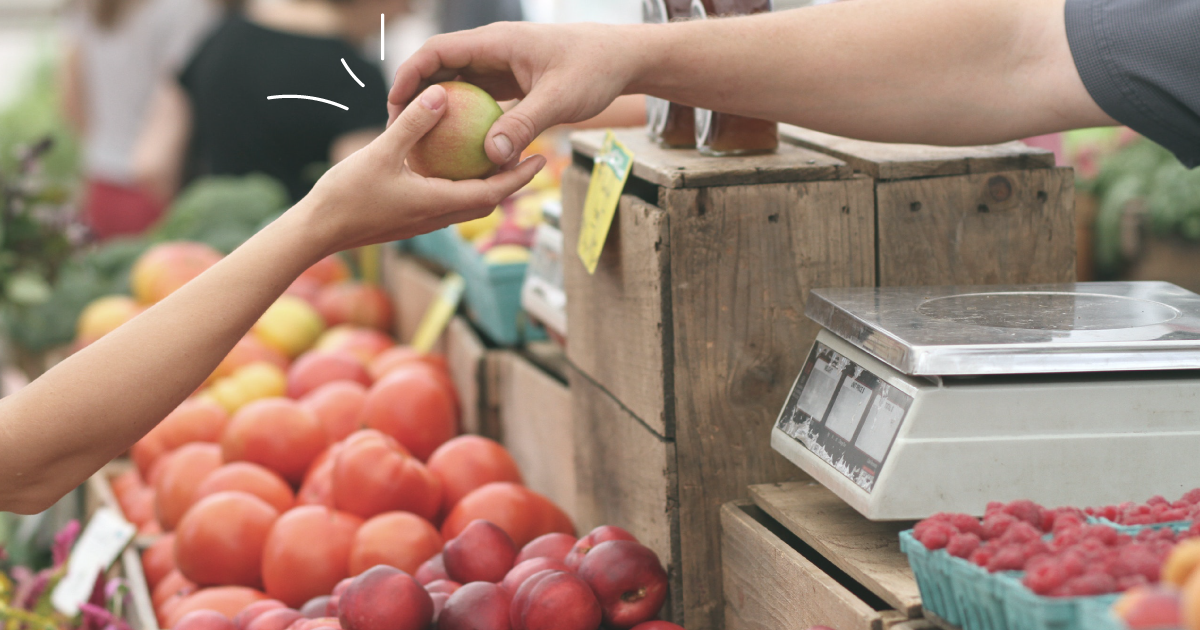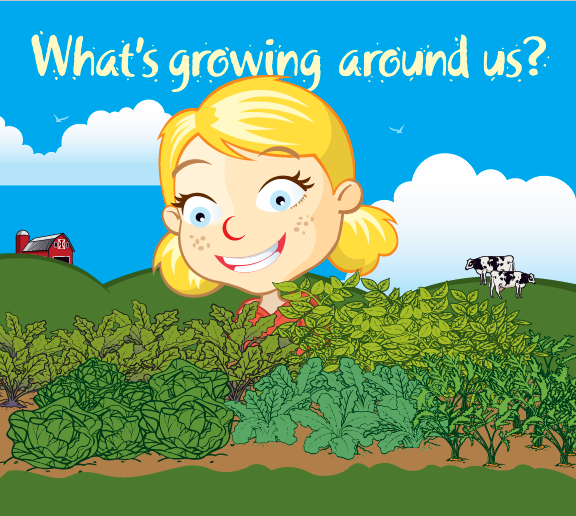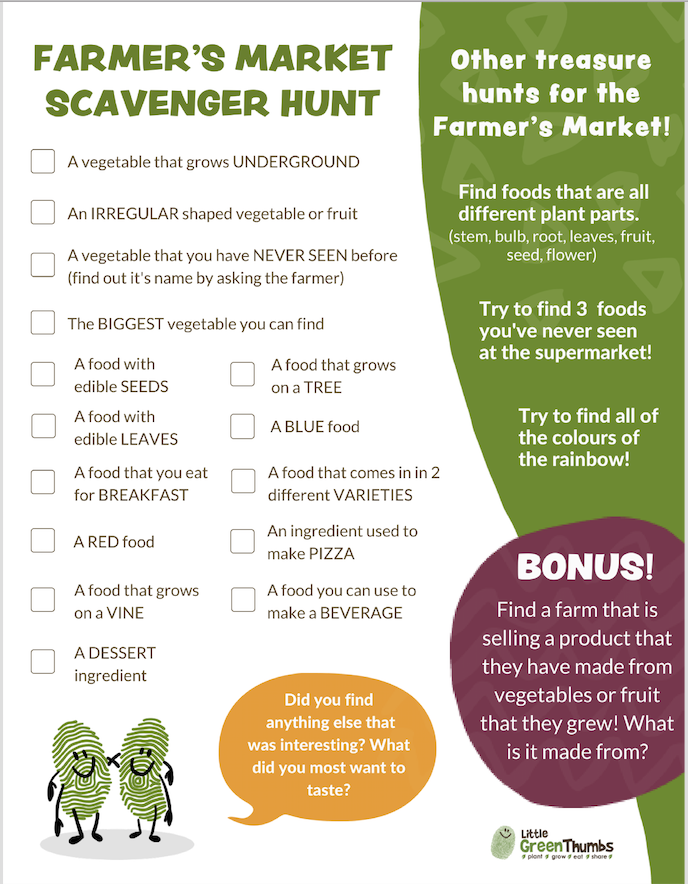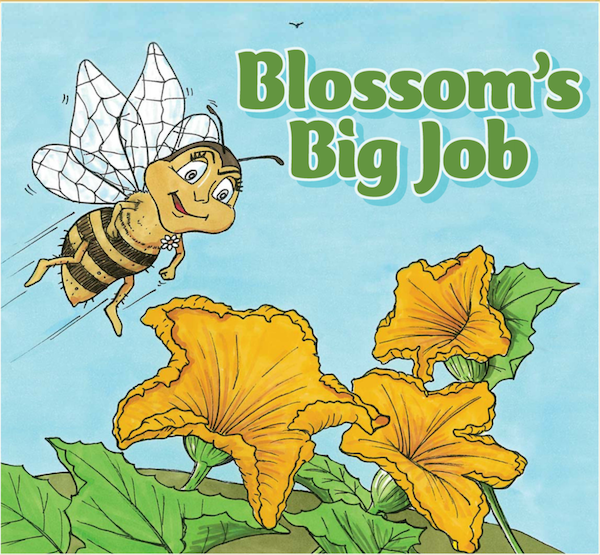
Farmers’ markets have a fun, vibrant atmosphere! Beyond the beautiful displays of colour and fresh produce, learning opportunities abound for youth at your local market. From sampling a new food, to seeing a wider variety of fruits and vegetables and meeting the people who grow our food, farmers’ markets are bursting with new experiences to develop food literacy. When youth begin to explore the story of our food, a web of people and processes is uncovered. When we better understand the relationship between these people and processes we can work collectively to build a healthy, sustainable food system.
Farmers’ markets are also a great place to build positive relationships to healthy food. We often think of emotional eating as a response to negative emotions; however, emotional eating can also be triggered by positive emotions (there’s no coincidence that McDonalds calls its kid’s meal the ‘Happy Meal’). By exploring the fun and excitement of a farmer’s market, you can help youth develop positive relationships with healthy fresh food.
We’ve compiled 10 ways that you can bring learning at the farmers’ market to life on your next visit! To help introduce youth to the concept of a farmers’ market, try one of the following read-aloud books. For youth in Newfoundland, we have a free digital download of the Agriculture in the Classroom Newfoundland book ‘What’s Growing Around Us’, where you can follow Abby and her mom on a trip to the market.

- What’s Growing Around Us > > Download
- Farmers’ Market Day by Shanda Trent
- We’re Going to the Farmers Market by Sara Anderson
- To Market, To Market by Nikki McLure
- Alice Waters and the Trip to Delicious by Jacqueline Briggs Martin and Jacqueline Martin
Cultivate a Farmers’ Market Learning Experience
1. Make it a picnic.
Go to the market with a mission in mind – gather food supplies for a picnic following your trip. You might pick up fresh bread and cheese for sandwiches or fresh vegetables for the making of a salad. You can use the opportunity to build a balanced meal, and reflect on different tastes and smells of new foods on your picnic. In a slight variation, you can build your own Stone Soup recipe! Read the book Stone Soup by Jon Muth before heading to the market. Designate your bag as the soup pot. Everything you add to the bag will go into your very own stone soup recipe!
2. Let kids count the money.
Cash is still a preferred payment at most farmer’s market. Let your child or students practice their counting by having them pay for the market goods. They can also practice counting by helping to fill your produce bags. You might ask them to “fill each bag with 3 zucchinis or 12 carrots”. You might even give your child a small amount of money and let them decide on their own produce and make a purchase. This is a great way to build confidence and practice manners.
3. Introduce new foods.
Even though there are over 80,000 species of edible plants in the world, we typically eat less than 30. One reason for this is food chain activities (ie. the better a food transports and stores, the more likely we will find it at the grocery store). For this reason, you often find many different varieties of vegetables and fruits produced locally and sold at the farmers market that kids have never seen at the supermarket. Seek out these foods and inquire to the farmers how to best prepare them.
4. Make it a cultural experience.
You may find some more unfamiliar foods at the farmers market, which are more commonly eaten by different cultures than your own. Can you find Japanese eggplant, Chinese long beans, bitter melon, chai or fresh made hummus? What better way to explore other cultures than through our taste buds!
5. Gather questions for the people who grow our food.
Encourage your kids (with a little coaching if necessary), to ask some questions to local farmers. You might ask why they choose to farm and grow food, what their favorite thing is to grow, or how to best prepare one of the vegetables they are selling. Usually farmers are more than happy to take a few minutes to answer questions.
6. Try a scavenger hunt.
There is so much to explore at the farmers’ market. Why not try afarmer’s market scavenger hunt! Download our Little Green Thumbs scavenger hunt template here.
7. Observe the many colours at the farmers’ market!
Can you find all of the colours in the rainbow? This is a great time to tell children how colour can indicate different vitamins in food, and encourage them to eat a rainbow of colours with their meals! After your trip, you could try this ‘Eat a Rainbow’ lesson by one of our favorite organizations Kid’s Gardening.
8. Search for mutant veggies.
Farmers’ markets are a great place to see misshapen and imperfect fruits and vegetables, or unique varieties of familiar vegetables. Can you find a carrot with two roots, a white beet, or a double potato? Maybe you’ll see vegetables with scarring, asymmetry, or vegetables that are much smaller or bigger than they’ve seen before. This is a great time to remind kids that produce that looks different can be just as nutritious! You might connect the idea of ‘ugly vegetables’ to the issues of food waste, and explain that perfectly nutritious vegetables are sometimes discarded because they look different and people might not buy them because of that. Take the learning further with this lesson plan about the campaign ‘Inglorious Fruits and Vegetables’ by French supermarket chain Intermarche or this lesson plan about ‘imperfect produce’ by Healthy Planet USA .
9. Have a sensory experience.
Farmers’ markets are a great time to bring our senses alive! What can kids see, taste, smell, touch and even hear at the farmers’ market? Make sure to get a farmer’s permission before you start smelling cilantro or gently thumping on melons. This is a great time to talk about the experience of eating as a full sensory experience! In your post-market taste test, ask kids to describe what they see, smell, taste, feel and even hear while biting into a fresh carrot or cucumber.
10. Learn the seasons of food.
For many kids, it’s perfectly natural to eat strawberries in the winter. Farmers’ markets often have an abundance of different foods when they are in season locally. Kids can learn what fruits and veggies are available during what season locally, and discover that they are not grown year-round. This is a great way to connect food to environmental cycles. When you spot vegetables ‘out-of-season’, you might ask a farmer how the vegetables are stored to be sold at a later date.


